The dog digestive system digests and breaks down the large and complex molecules of nutrients into their simple, most soluble forms. The digested end products undergo absorption by the intestinal wall and are used by the body for metabolism. The two basic types of action involved are mechanical and chemical digestion. Mechanical digestion involves the physical mastication, mixing, and transport of food through the GI tract. Chemical digestion involves the breakdown of the chemical bonds of complex nutrients through enzymatically catalyzed hydrolysis.
Importance of Dog Digestive System
The digestive system is the essential system of the body that take part in the digestion and absorption of the food particle. The three significant foods that require digestion are fats, carbohydrates, and proteins. Before absorption occurs, most fat is hydrolyzed to glycerol, free fatty acids, and some monoglycerides and diglycerides. Complex polysaccharides are broken down into simple carbohydrates like glucose, fructose, and galactose. Protein foods are hydrolyzed to single amino acid units and some dipeptides.
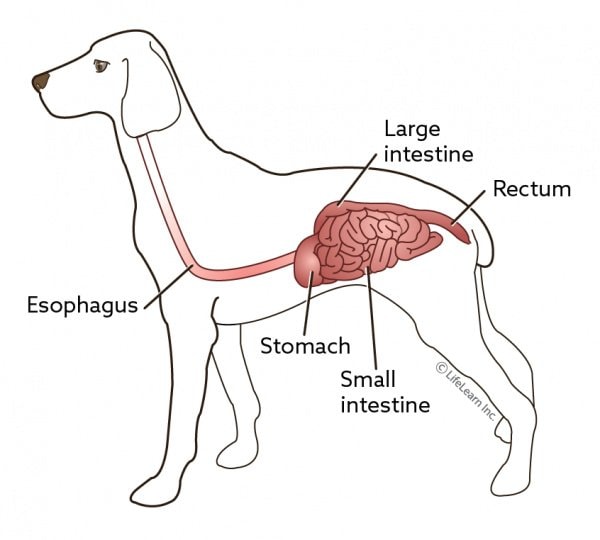
Digestive System of The Dog
The food digestion and absorption process start when food first enters the buccal cavity and ends with the excretion of unnecessary products and undigested food particles in the feces and urine. A healthy and active digestive system is fundamental to your dog’s well-being. The digestive system includes the following:
- Lips.
- Tongue.
- Mouth cavity.
- Teeth.
- Salivary glands
- Oesophagus.
- Stomach.
- Small intestine.
- Large intestine.
- Pancreas.
- Liver and Gallbladder.
- Anus.
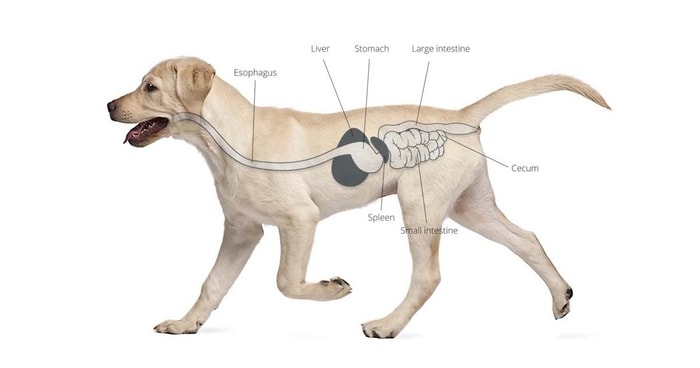
Mouth: First Part of Dog Digestive System
The mouth functions to grasp food into the body, initiate physical mastication, and mix with salivary secretions. Saliva is excreted in response to the sight and smell of food particles. The saliva acts as a lubricant to facilitate chewing and swallowing and solubilize the food components that stimulate the tongue’s taste buds and impart flavor to food. It is crucial to know you, and saliva is also essential to the dog for evaporative cooling.
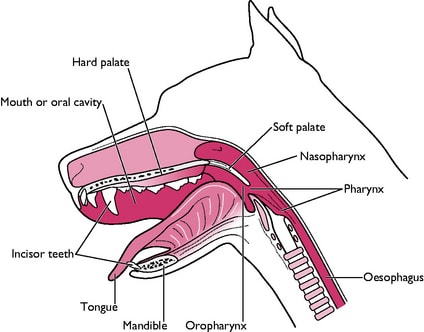
The Esophagus of Dog
Food passes from the oral cavity to the stomach through the esophagus. While the food reaches the end of the food pipe, the cardiac sphincter of the stomach, a muscular ring at the junction between the esophagus and stomach, relaxes to allow food to enter the stomach. The mucosal lining cells of the esophagus produce mucus in response to the food, which further helps in lubricating food as it passes to the stomach.
The muscular ring relaxes in response to the peristaltic movements of the esophagus. The cardiac ring immediately constricts after food has passed to prevent reflux of the stomach contents back into the lower esophagus.
Dog Stomach: Store House of Food
Your dog’s stomach acts as a storehouse for the body, acts food is to be swallowed as a meal rather than interrupted throughout the day. The proximal secretion of the stomach can expand to allow the reserve of the more significant volume of food, a function that is assumed to be of greater importance for your dogs, who tend to eat excess meals at a given time. The stomach’s storage function also initiates the chemical digestion of protein, mixes food with gastric juices, and regulates food passes into the small intestine.
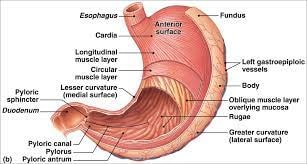
The Small Intestine of Dog
The small intestine (SI) is the most significant part of a dog’s digestive system having three distinct parts; duodenum, jejunum, and ileum. Before reaching the SI, most of the digestive processes in dogs are mechanical. The chyme is delivered through the stomach’s pyloric sphincter to the duodenum as a semifluid material made up of food materials mixed with gastric juices. The polysaccharides and fats are almost unchanged in composition, but the protein in the food has been partially hydrolyzed to smaller polypeptides.
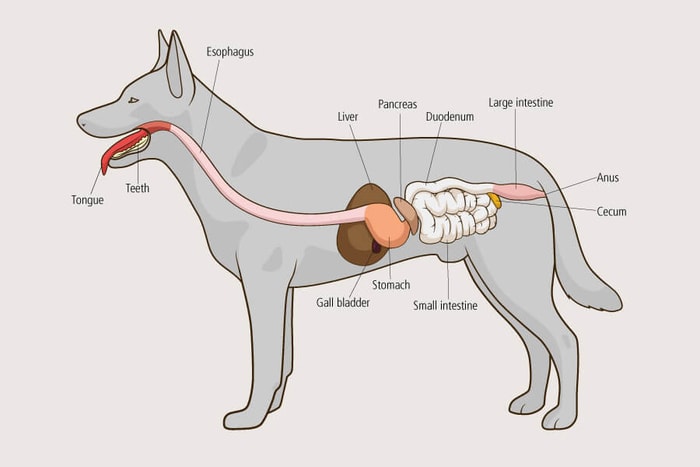
Dog Digestive System: Large Intestine
The cecum is an intestinal pouch located next to the colon and the small intestine junction. The components of the small intestine enter the large intestine through the ileocecal valve. This portion of the gastrointestinal tract varies in size and functional capacity among mammals. The dog’s cecum is not as more prominent as the pig’s, but it is somewhat more significant than the cat’s.
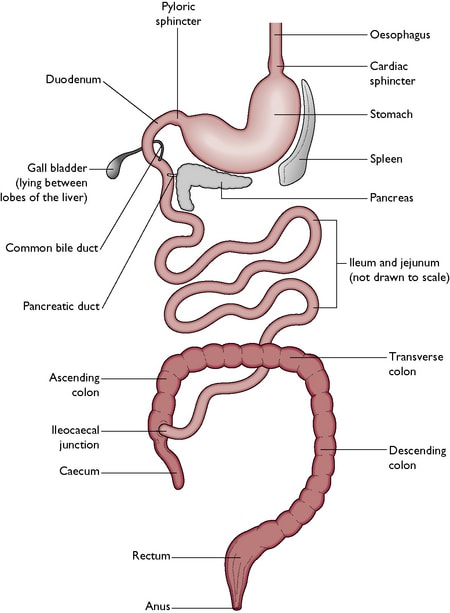
The primary function of the large intestine in your dog is the absorption of water and certain electrolytes. There are no microvilli in the large intestine and, therefore, lower absorption capacity than in the small intestine.
Final Talk on Dog Digestive System
The dog’s digestive system has all of the parts of the dogs that are involved in taking in and processing food. Many metabolic and infectious diseases of dogs arise from the digestive system. It is imperative to have a workable knowledge of the canine digestive system. In my article, I have to discuss all the information about the digestive system of your dog that is essential to know you. Thank you for your time.